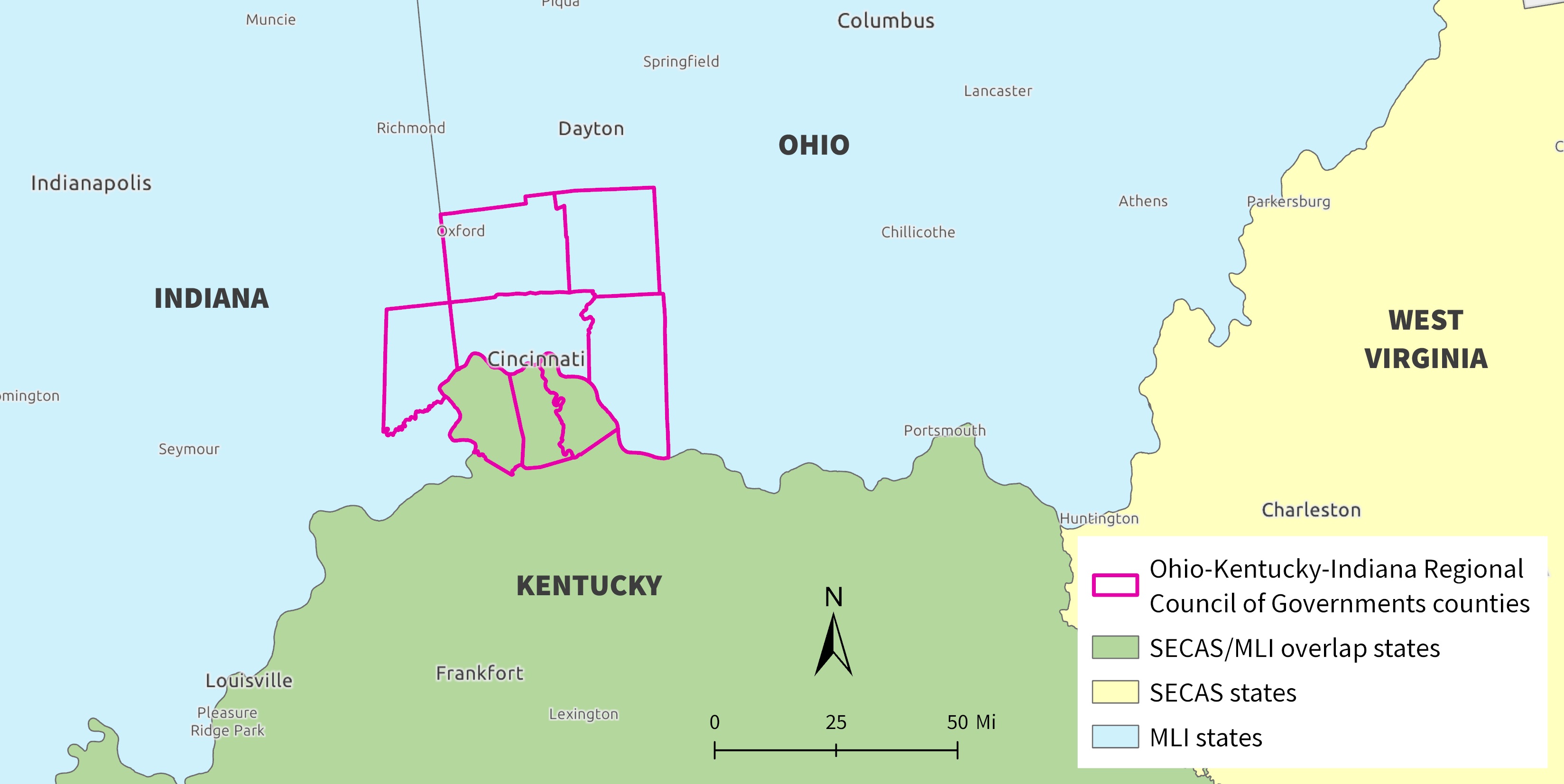SECAS and MLI - Regional partnerships without boundaries

Our society has us wired to believe that “new” is inherently “better” and that automatically means success. We often assume the mentality of “stronger, faster, smarter” is the key to accomplishing your goals and leads to being considered a “trail blazer”. We spend so much time trying to be innovative and “outside of the box” that we tend to forget that a box can be an extremely functional tool. It’s useful for storage, organization, and was probably your favorite toy as a baby. Its concept is probably older than the wheel and was a groundbreaking tool at one time. It’s so familiar that we don’t even think of as it a tool anymore. So why rush to discount something that’s tried and true? At this point, I think we can all agree that we all have a renewed appreciation for the familiar concept of a box, but don’t worry—I’m not trying to sell you a box.
Chasing novel and innovative solutions can be fun and exciting, but that doesn’t mean that old, trusty-rusty concepts are obsolete. In fact, those concepts have been around so long because they work. So what if there is safety in familiarity? Is that necessarily a bad thing?
The comfort of familiarity is a common thread through many aspects of our personal lives. In social settings we naturally gravitate to people we’re familiar with. When encountering new and different people, we can often find common ground based on shared values, familiar interests, and experiences. This is a basic concept of how relationships are formed and makes the imaginary lines that separate us seem a bit trivial.
In thinking about state and regional boundaries, we often visualize neat lines drawn on a map. However, this isn’t always the case. There will always, be somebody that needs to, or does, cross those boundaries or “step outside their box”. For example, Kentucky and Missouri fall within the boundaries of both the Southeast and Midwest Association of Fish and Wildlife Agencies. While this dual membership may seem like it could be confusing, it offers an additional benefit to these areas by giving them access to a broader array of tools and resources unique to each region. It also provides an opportunity to promote partnership and the concept of “we” as opposed to “us” or “them”—and that’s what collaborative conservation is all about.

Recently, the Ohio-Kentucky-Indiana Regional Council of Governments held its annual Regional Conservation Council meeting. This council, which consists of various stakeholders in the conservation community—including representatives from specific soil and water conservation districts in these states—regularly convenes to tackle various topics, such as land use, water quality, and restoration plans.
After hearing about the Southeast Conservation Blueprint, their Senior Environmental Planner reached out to SECAS staff to discuss conservation prioritization and mapping resources that could be presented at their meeting. After an engaging discussion, everybody agreed, since the council’s jurisdiction spans multiple states and regions, it offered a perfect opportunity for SECAS staff to collaborate with our talented Midwest Landscape Initiative (MLI) colleagues.
This collaboration would not only give us the opportunity to share the importance of our Conservation Blueprints by highlighting similar aspects and discussing the differences in the tools, but it would also enable us to emphasize one of the shared core values of our mission: to break down boundaries and foster relationships that enhance conservation efforts.
SECAS and MLI staff met multiple times working through a flurry of great ideas to refine our message while showcasing our combined tools, resources, and capabilities. With Kate Parsons, Acting MLI Coordinator, at the helm in person and SECAS and MLI staff supporting virtually, we were not only able to promote our amazing tools and support resources, but also convey a unified central message: that by working together, we can accomplish more by breaking through imaginary lines on the map with partnerships based on the familiarity of common goals.
In summary, our data resources are very cool and an innovative part of our work, but they are still just one component in our toolbox to use as we strive toward a unified goal. Our most important tool will always be a familiar one: the partnerships and connections that we foster between groups across the conservation community. It’s these partnerships that are the key to breaking through boundaries to make real change across the conservation landscape.